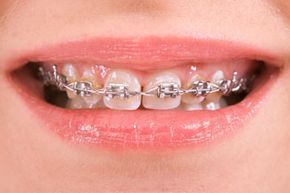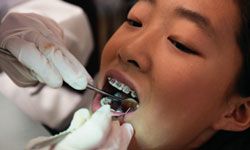Mitt Romney said we're living in "a smartphone world," but you don't have to be a high-profile politician to know that it's not just our communication devices that feature cutting-edge technology [source: Petri]. Cars, whiteboards, credit cards -- it seems that just about everything we touch these days is "smart." So it should come as no surprise that the centuries-old practice of orthodontics is also getting smart.
According to the American Association of Orthodontists, nearly 5.5 million Americans currently wear braces. While roughly 80 percent of braces-wearers are children and teens, more and more adults are consulting orthodontists with the hope of improving their smiles. From 1996 to 2008, the number of adults in braces jumped by 24 percent, to more than 1 million [source: Palm Beach Post].
Advertisement
Conventional braces contain a small bracket that is bonded to each tooth and attached by wire and elastic bands, which collectively use pressure to slowly move teeth in a specific direction. The first braces, designed by the ancient Greeks, used base metals and cord made from animal intestines. More recent are the "metal mouth" steel contraptions that that came into use in the 1960s. Today, dental braces have come a long way from the uncomfortable and unsightly devices of days gone by, with popular options including lingual braces (fitted behind the teeth) and Invisalign's clear, removable aligners [sources: AAO, Invisalign].
Now smart bracket braces are moving the world of smile correction another step forward. Read on to find out what the fuss is all about.
Advertisement

